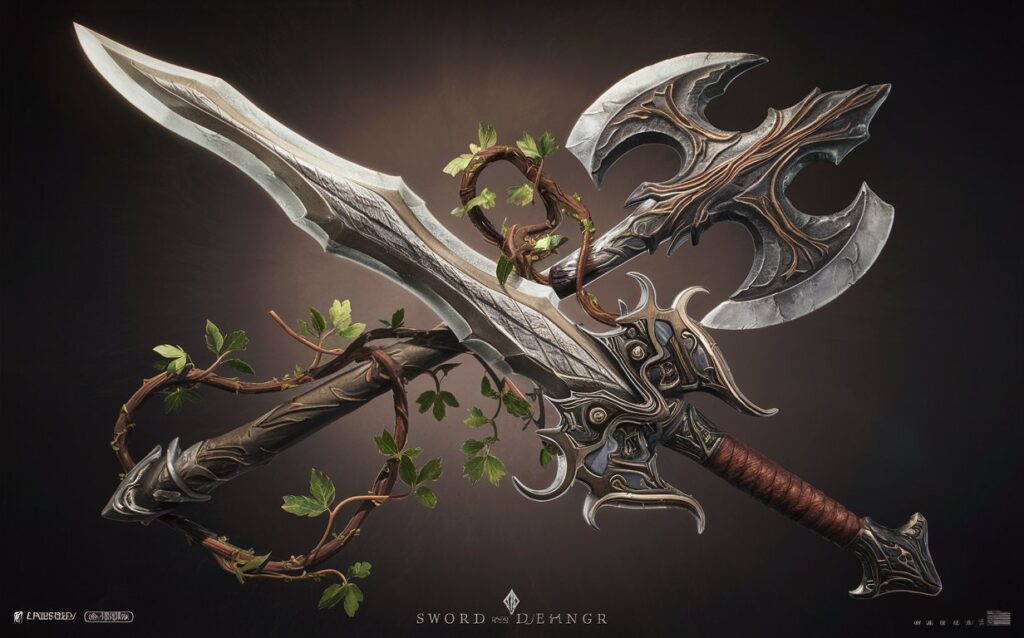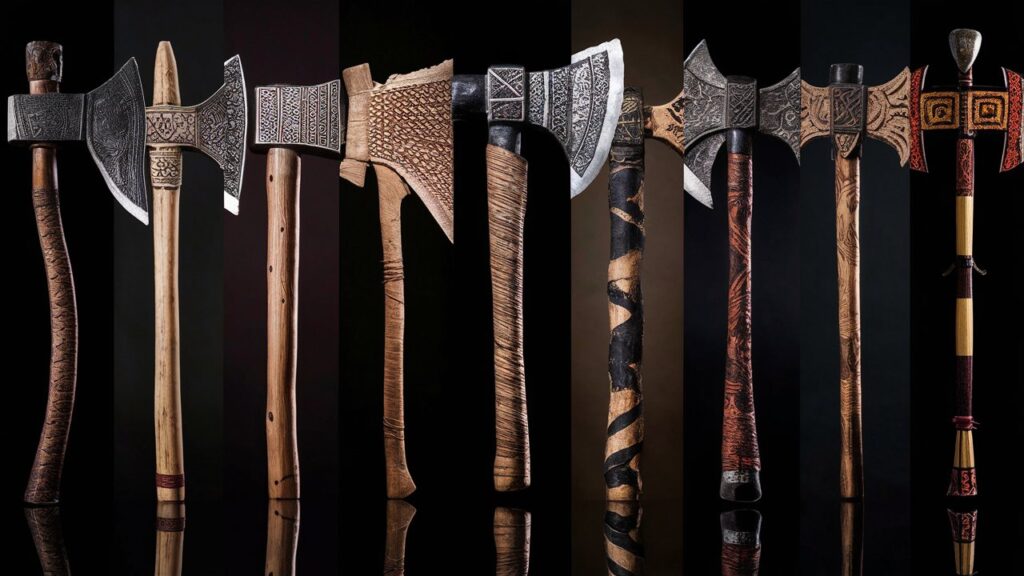- Free Shipping and 100 days free returns.
When we think of Vikings, the image that often comes to mind is fierce warriors, braving the seas and conquering lands with their mighty weapons. The most famous of these weapons are the Viking ax and the Viking sword. Both have become symbols of the Viking Age, representing the strength and prowess of these legendary warriors. This blog post compares the effectiveness of Viking axes and swords, exploring their historical context, design, combat techniques, and cultural significance.
Welcome to Viking Axe In this post, we’ll examine this fierce debate: Viking Ax vs. Sword. Both weapons played important roles in Norse warfare, each with unique advantages. Join us as we compare the destructive power of the ax to the precision and versatility of the sword as we explore its effectiveness. Which was more effective? Let’s find out.
The origins of the Viking ax and sword date back to the early medieval period of the 8th to 11th centuries. Viking axes were often simple but deadly and were used in battle and everyday life. They ranged from small hand axes to large, two-handed battle axes. Swords, on the other hand, were more complex and expensive to produce, often reserved for wealthy warriors or people of high rank.
In Viking society, both weapons played crucial roles. Axes were versatile tools used for chopping wood, building ships, and, of course, as deadly weapons in combat. Swords, however, were primarily weapons of war and symbols of prestige. They were often passed down through generations, signifying honor and lineage.
The Viking axe and sword were both crafted with remarkable attention to detail. Viking axes typically featured a wooden handle and a broad, iron blade, optimized for chopping and hacking. The blade shape and handle length varied, providing a balance of reach and power.
In contrast, Viking swords were double-edged with a central fuller to reduce weight. The hilt design ensured a firm grip, and the blade, often made of high-quality steel, allowed for both slashing and thrusting.
Comparatively, the craftsmanship of the katana sword, seen in anime swords, emphasizes a curved, single-edged blade with a sharp point, designed for cutting. Both Viking and katana swords showcase the artistry and functionality of historical weapon-making traditions.

Viking weapons were designed for both offense and defense, with axes and swords playing an important role in battle. Viking axes were used for powerful chopping and hacking, their design allowing for devastating strikes that were able to clear through shields and armor. Swords, meanwhile, were used for precise cutting and thrusting, exploiting gaps in an opponent’s defense.
The Viking shield was essential in combat, used not only for protection but also as a weapon in its own right. Warriors will use shields to block incoming attacks and create opportunities for counterattacks. The combination of these combat techniques, leveraging the offensive power of Viking weapons and the defensive capabilities of the Viking shield, made Viking warriors formidable opponents.
The efficiency of axes and swords in combat is revealed by historical narratives and Viking sagas. For example, these weapons were effectively used by Viking troops at the Battle of Stamford Bridge in 1066. The axe’s overwhelming force and efficacy are demonstrated by the well-known tale of a lone Viking axeman who managed to hold off an entire army at a tiny bridge.
In contrast, daggers were preferred by many noble soldiers and Viking leaders due to their battle effectiveness and status. The blades were given names and given symbolic meanings frequently, which emphasizes their prominence in Viking society.
The Viking ax was a multi-functional tool. In addition to its use in combat, it served as a practical tool for everyday tasks such as chopping wood and shipbuilding. This versatility made it an indispensable part of Viking life.
However, the sword was more special. Its primary role was in combat and as a status symbol. Although it was not as versatile as the axe, its importance in battle and as a symbol of power was undeniable.

Both Viking axes and swords were built to withstand harsh conditions. Axes were generally easier to maintain and repair due to their simpler construction. A damaged axe head could be replaced or repaired relatively easily.
Swords, on the other hand, required more care. The blade needed regular sharpening to maintain its edge, and the hilt and pommel required maintenance to ensure balance and grip. Despite this, a well-made Viking sword could last for generations, becoming a treasured family heirloom.
In Viking mythology and art, both the ax and the sword have symbolic meaning. Axes were often associated with Norse gods such as Thor, who wielded the mighty hammer Mjölnir. Swords were seen as symbols of power and honor, often featured in stories of legendary warriors and their heroic deeds.
The prestige associated with holding a sword was considerable. Swords were often decorated with runes and precious metals, indicating the status and wealth of the owner. Axes, while simple, were equally respected for their practicality and effectiveness in battle.

Today, the legacy of Viking axes and swords lives on. They are popular in historical reenactments, movies, and TV shows, capturing the imagination of people worldwide. Modern weapon designs have also been influenced by the craftsmanship and techniques of Viking blacksmiths.
In contemporary culture, Viking axes and swords are often seen as symbols of strength and resilience. They continue to inspire fascination and admiration, reflecting the enduring legacy of the Viking age.
The Viking weapon and ax were both quite powerful weapons in their own right. A blade stood for honor and accuracy, whereas the ax was a multipurpose, potent weapon. The decision between an ax and a sword ultimately comes down to the warrior’s rank, combat style, and individual preferences. Both weapons were indispensable to Viking society and have left a lasting legacy. Examining the subtleties of these recognizable weapons might help anyone interested in Viking history gain a deeper understanding of the Viking Age and its fabled warriors.